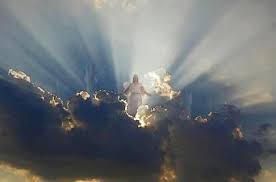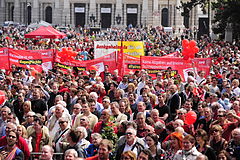 May 12 is ME/CFS and Fibromyalgia International Awareness Day.
May 12 is ME/CFS and Fibromyalgia International Awareness Day.
Chronic fatigue syndrome (CFS), also known as myalgic encephalomyelitis (ME), is characterized by substantial debility, which affects daily activities, and is accompanied by profound fatigue that is not relieved by rest. While varying by person, symptoms include post-exertional malaise, cognitive problems, unrefreshing sleep, and pain.
Researchers estimate that at least one million Americans have ME/CFS, but only 20% are diagnosed with the illness. Patients, families, employers, and society endure significant costs associated with ME/CFS. These costs are estimated to be $18-51 billion annually in the United States. Although most common in women, ME/CFS affects people of all ages, including children, and all races and ethnicities. Scientists have not determined the cause or causes of ME/CFS.

 “He is under the influence…” This expression has come to be used for someone “driving under the influence of alcohol or drugs.”
“He is under the influence…” This expression has come to be used for someone “driving under the influence of alcohol or drugs.”


 Fifth World AIDS Orphans Day: Tens of “Circles of Hope” are created worldwide by young people to remind governments of the objectives set in 2001, when they signed the United Nations Declaration of Commitment on HIV/AIDS.
Fifth World AIDS Orphans Day: Tens of “Circles of Hope” are created worldwide by young people to remind governments of the objectives set in 2001, when they signed the United Nations Declaration of Commitment on HIV/AIDS. We repeat the words every time we recite the Creed : « He ascended to heaven…” It is possible that our lips pronounce the words without our giving too much attention to what we speak. But this is what our celebration is about today. The 1st reading (Acts 1:1-11) tells us: “He (Christ) was lifted up while they looked on, and a cloud took him from their sight.”
We repeat the words every time we recite the Creed : « He ascended to heaven…” It is possible that our lips pronounce the words without our giving too much attention to what we speak. But this is what our celebration is about today. The 1st reading (Acts 1:1-11) tells us: “He (Christ) was lifted up while they looked on, and a cloud took him from their sight.”
 The eight-hour movement to reduce the working day from 10 to eight hours began after the Civil War. It was a major aim of the National Labor Union, whose first congress met in 1866. By 1868 congress and six states passed an eight-hour legislation. In 1884 the National Federation of Organized Trades and Labor Assemblies decided to call for a general strike on May 1, 1886, to enforce demands for employers to observe the eight-hour day. In 1947, amidst the anti-Communist Cold War hysteria, the US Veterans of Foreign Wars renamed May 1 as « Loyalty Day » and a joint session of Congress later made the pronouncement official.
The eight-hour movement to reduce the working day from 10 to eight hours began after the Civil War. It was a major aim of the National Labor Union, whose first congress met in 1866. By 1868 congress and six states passed an eight-hour legislation. In 1884 the National Federation of Organized Trades and Labor Assemblies decided to call for a general strike on May 1, 1886, to enforce demands for employers to observe the eight-hour day. In 1947, amidst the anti-Communist Cold War hysteria, the US Veterans of Foreign Wars renamed May 1 as « Loyalty Day » and a joint session of Congress later made the pronouncement official. Washington, D.C. will serve as the International Jazz Day 2016 Global Host City. As International Jazz Day celebrates its 5th anniversary, the U.S. nation’s capital will host a multitude of jazz performances, community service initiatives, and education programs in schools, libraries, hospitals, community centers and arts venues across the city.
Washington, D.C. will serve as the International Jazz Day 2016 Global Host City. As International Jazz Day celebrates its 5th anniversary, the U.S. nation’s capital will host a multitude of jazz performances, community service initiatives, and education programs in schools, libraries, hospitals, community centers and arts venues across the city.